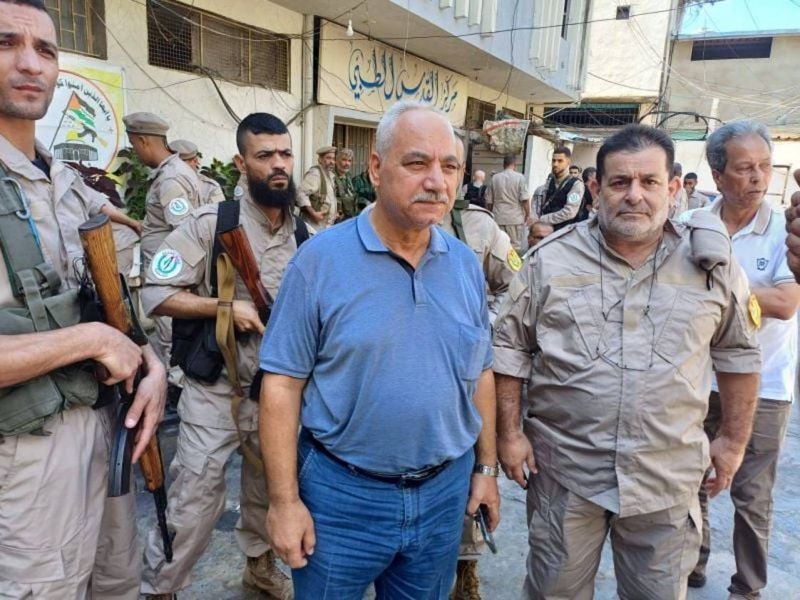
Mahmoud Ajoury, center, the commander of the joint Palestinian force, at the time of its deployment in the Ain al-Hilweh camp, Sept. 25 2023. (Credit: Mountasser Abdallah)
Members of the joint Palestinian security force were tasked Monday with deploying in the Palestinian refugee camp of Ain al-Hilweh in order to maintain stability, following internal clashes.
Those hostilities broke out at the end of July and early September, leaving around 30 people dead. They pitted gunmen from the nationalist Fatah movement against those of Islamist groups, including Jund al-Sham and al-Shabab al-Muslim (Muslim Youth).
The force is regularly mentioned when referring to Lebanon’s largest Palestinian camp. What do we know about it?
Who has joined the joint security force?
According to the unit’s commander Mahmoud Ajoury, the joint force currently comprises 165 fighters from the three main movements present in the camp, i.e. the Palestine Liberation Organization (PLO), the Tahalof (a coalition of Palestinian forces) and Islamist factions. The group includes fighters from Fatah, Hamas and the Islamic Jihad, as well as Asbat al-Ansar, among others.
When was it created and what role does it serve?
Founded in 2014, the Palestinian joint security force aims to unite the ranks of the various Palestinian factions, ensuring security and stability in Ain al-Hilweh camp, which is plagued by chronic instability. It is also present in other camps.
In particular, it is in charge of maintaining order, arresting criminals and ensuring social security in the camps where it is present. It works in coordination with the Lebanese army, handing over wanted persons to the authorities. The army did not respond to our requests for comment on this coordination.
How has it evolved?
Because it is made up of gunmen from different factions, there has at times been turmoil in ranks of the joint security force. Hamas withdrew from the force in 2021, after three of its members were shot dead during a funeral in the Burj al-Shemali camp, near Sour. Hamas blamed Fatah for that incident, but Fatah spokesman Youssef Zarii said the Islamist movement rejoined the joint force after the latest clashes in Ain al-Hilweh.
The force has now gained strength, Ajoury said, adding that “it now brings together the whole Palestinian fabric to ensure the stability of the Ain al-Hilweh camp.” He said that despite some tensions, this force “has never halted its activities.”
“Once you’re part of the group,” he said, “you forget your political affiliation.”
As for Hamas head of national relations, Ayman Shanaa, went so far as to say that there are no problems between the members of the different groups in the joint security force.
“If anything happens,” he said, “it’s usually very limited.”
“Since the recent wave of violence, we have decided to increase the force’s numbers and military equipment,” said Shanaa, “so that it can deal with everything that is happening in the camp.”
For his part, Zariï noted that this should enable a large-scale deployment “throughout the camp,” following the phase one Monday, which consisted of mobilizing several dozen men along two front lines, between the Hatine and Ras al-Ahmar neighborhoods and between the Safsaf and Baraksat neighborhoods.
This story originally ran in French, translated by Joelle Khoury.